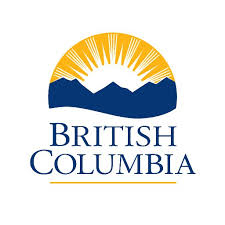region
Type of resources
Available actions
Topics
Keywords
Contact for the resource
Provided by
Years
Formats
Representation types
Update frequencies
status
Service types
-

Ministry of Transportation Regional Boundary is an exclusive geographic area within the province that the Ministry organizational unit is responsible for. Each Ministry Region is partitioned into one or more non-overlapping Ministry Districts that cover the entire Ministry Region
-
Group of neighbouring municipalities joined together for the purposes of regional planning and managing common services (such as police or ambulance services). These groupings are established under laws in effect in certain provinces of Canada. Census division (CD) is the general term for provincially legislated areas (such as county, municipalité régionale de comté and regional district) or their equivalents. In other provinces and the territories where laws do not provide for such areas, Statistics Canada defines equivalent areas for statistical reporting purposes in cooperation with these provinces and territories. Census divisions are intermediate geographic areas between the province/territory level and the municipality (census subdivision).
-

This file contains the regional boundaries for the five Ministry regions. It is currently available as a .kmz (a compressed .kml file). The Ministry no longer uses a 'regional' model for service delivery. As such, this is just maintained for historical purposes.
-

This dataset divides Yukon into 9 tourism regions which are used to track wilderness tourism statistics. Note that the Yukon Vacation Planner divides Yukon into 8 similar tourism regions with somewhat different boundaries. Distributed from [GeoYukon](https://yukon.ca/geoyukon) by the [Government of Yukon](https://yukon.ca/maps) . Discover more digital map data and interactive maps from Yukon's digital map data collection. For more information: [geomatics.help@yukon.ca](mailto:geomatics.help@yukon.ca)
-

This data represents the Ministry of Natural Resources (MNR) administrative boundaries from 1997-2022. Ministry of Natural Resources (MNR) administrative areas divide Ontario into smaller organizational units. These units were used to manage ministry programs and resources at a district and regional level. Regional and district boundaries were originally created based on: * metes and bounds * topographic features * geographic townships boundaries * territorial district boundaries We made changes to district boundaries over time. We are no longer updating this data. It is best suited for historical research and analysis. __MNR regions__ MNR regions were created to help manage ministry programs and resources at a regional level. Regions consist of several districts. __MNR districts__ MNR regions were divided into smaller organizational units called districts. __MNR areas__ MNR districts were further divided into areas.
-

The Yukon Geological Survey (YGS) has compiled over 195 surficial geology maps into a standardized GIS format, providing approximately 80% coverage of the territory. The maps range in scales from 1:250,000 to 1:10,000 with spatial overlap between scales. The original maps were produced by various agencies, including the Geological Survey of Canada, YGS, Yukon Government, universities, and the City of Whitehorse. All original feature descriptions have been preserved and also converted to standardized values using the Yukon terrain classification system. The compilation includes 4 GIS datasets and supporting documents available for download via [YGS integrated data system](https://data.geology.gov.yk.ca/Compilation/33) (YGSIDS) or GeoYukon. A .lyr file is [provided](https://data.geology.gov.yk.ca/Compilation/33) to symbolize feature classes and differentiate overlapping maps at different scales. Additionally, there is a surficial geology map index. The polygon attributes captured include surficial material, texture, age, surface expression, and geomorphological processes. Line features include geological contacts, glacial limits, glacial landforms (cirques, arêtes, eskers, meltwater channels, moraines), and non-glacial landforms (faults, lineaments, landslides, escarpments). Point features include field station, fossil and sample locations, glacial landforms (erratics, kames, kettles, drumlins, flutings), permafrost features (pingos, palsas, patterned ground, thermokarst depressions), and other non-glacial landforms (landslides, tors). The map index provides information on each map publication such as author, map title, map scale, publisher. These data are valuable for land-use applications in the territory, including: mineral and placer exploration, geotechnical engineering, infrastructure planning, granular resource assessments, permafrost modeling, agricultural assessments, forest management, and biophysical or ecological land classification. Distributed from [GeoYukon](https://yukon.ca/geoyukon) by the [Government of Yukon](https://yukon.ca/maps) . Discover more digital map data and interactive maps from Yukon's digital map data collection. For more information: [geomatics.help@yukon.ca](mailto:geomatics.help@yukon.ca)
-

Fire regions are the largest management unit where wildland fire resources are allocated and deployed. They can be further subdivided into fire districts. Distributed from [GeoYukon](https://yukon.ca/geoyukon) by the [Government of Yukon](https://yukon.ca/maps) . Discover more digital map data and interactive maps from Yukon's digital map data collection. For more information: [geomatics.help@yukon.ca](mailto:geomatics.help@yukon.ca)
-

List of locations of B.C. public and B.C. private degree granting and non-B.C. degree granting post-secondary institutions.
-
The USGS National Hydrography Dataset (NHD) service from The National Map (TNM) is a comprehensive set of digital spatial data that encodes information about naturally occurring and constructed bodies of surface water (lakes, ponds, and reservoirs), paths through which water flows (canals, ditches, streams, and rivers), and related entities such as point features (springs, wells, stream gages, and dams). The information encoded about these features includes classification and other characteristics, delineation, geographic name, position and related measures, a "reach code" through which other information can be related to the NHD, and the direction of water flow. The network of reach codes delineating water and transported material flow allows users to trace movement in upstream and downstream directions. In addition to this geographic information, the dataset contains metadata that supports the exchange of future updates and improvements to the data. The NHD is available nationwide in two seamless datasets, one based on 1:24,000-scale maps and referred to as high resolution NHD, and the other based on 1:100,000-scale maps and referred to as medium resolution NHD. Additional selected areas in the United States are available based on larger scales, such as 1:5,000-scale or greater, and referred to as local resolution NHD. The NHD from The National Map supports many applications, such as making maps, geocoding observations, flow modeling, data maintenance, and stewardship. For additional information on the NHD, go to http://nhd.usgs.gov/index.html. The Watershed Boundary Dataset (WBD) is a companion dataset to the NHD. It defines the perimeter of drainage areas formed by the terrain and other landscape characteristics. The drainage areas are nested within each other so that a large drainage area, such as the Upper Mississippi River, will be composed of multiple smaller drainage areas, such as the Wisconsin River. Each of these smaller areas can further be subdivided into smaller and smaller drainage areas. The WBD uses six different levels in this hierarchy, with the smallest averaging about 30,000 acres. The WBD is made up of polygons nested into six levels of data respectively defined by Regions, Subregions, Basins, Subbasins, Watersheds, and Subwatersheds. For additional information on the WBD, go to http://nhd.usgs.gov/wbd.html. The National Map hydrography data is commonly combined with other data themes, such as boundaries, elevation, structures, and transportation, to produce general reference base maps. The National Map viewer allows free downloads of public domain NHD and WBD data in either Esri File or Personal Geodatabase, or Shapefile formats.
-
The USGS National Hydrography Dataset (NHD) service from The National Map (TNM) is a comprehensive set of digital spatial data that encodes information about naturally occurring and constructed bodies of surface water (lakes, ponds, and reservoirs), paths through which water flows (canals, ditches, streams, and rivers), and related entities such as point features (springs, wells, stream gages, and dams). The information encoded about these features includes classification and other characteristics, delineation, geographic name, position and related measures, a "reach code" through which other information can be related to the NHD, and the direction of water flow. The network of reach codes delineating water and transported material flow allows users to trace movement in upstream and downstream directions. In addition to this geographic information, the dataset contains metadata that supports the exchange of future updates and improvements to the data. The NHD is available nationwide in two seamless datasets, one based on 1:24,000-scale maps and referred to as high resolution NHD, and the other based on 1:100,000-scale maps and referred to as medium resolution NHD. Additional selected areas in the United States are available based on larger scales, such as 1:5,000-scale or greater, and referred to as local resolution NHD. The NHD from The National Map supports many applications, such as making maps, geocoding observations, flow modeling, data maintenance, and stewardship. For additional information on the NHD, go to http://nhd.usgs.gov/index.html. The Watershed Boundary Dataset (WBD) is a companion dataset to the NHD. It defines the perimeter of drainage areas formed by the terrain and other landscape characteristics. The drainage areas are nested within each other so that a large drainage area, such as the Upper Mississippi River, will be composed of multiple smaller drainage areas, such as the Wisconsin River. Each of these smaller areas can further be subdivided into smaller and smaller drainage areas. The WBD uses six different levels in this hierarchy, with the smallest averaging about 30,000 acres. The WBD is made up of polygons nested into six levels of data respectively defined by Regions, Subregions, Basins, Subbasins, Watersheds, and Subwatersheds. For additional information on the WBD, go to http://nhd.usgs.gov/wbd.html. The National Map hydrography data is commonly combined with other data themes, such as boundaries, elevation, structures, and transportation, to produce general reference base maps. The National Map download client allows free downloads of public domain NHD and WBD data in either Esri File Geodatabase or Shapefile formats.
 Arctic SDI catalogue
Arctic SDI catalogue